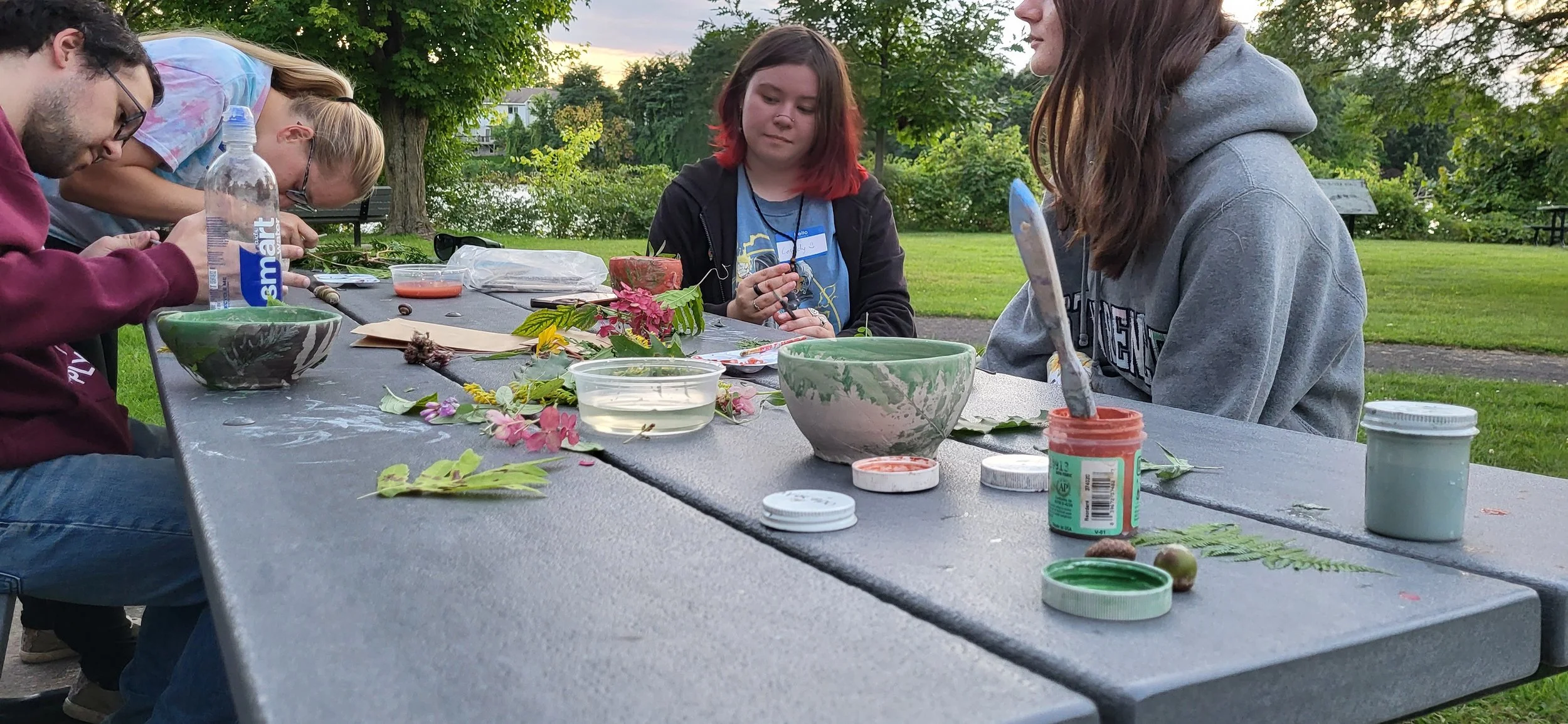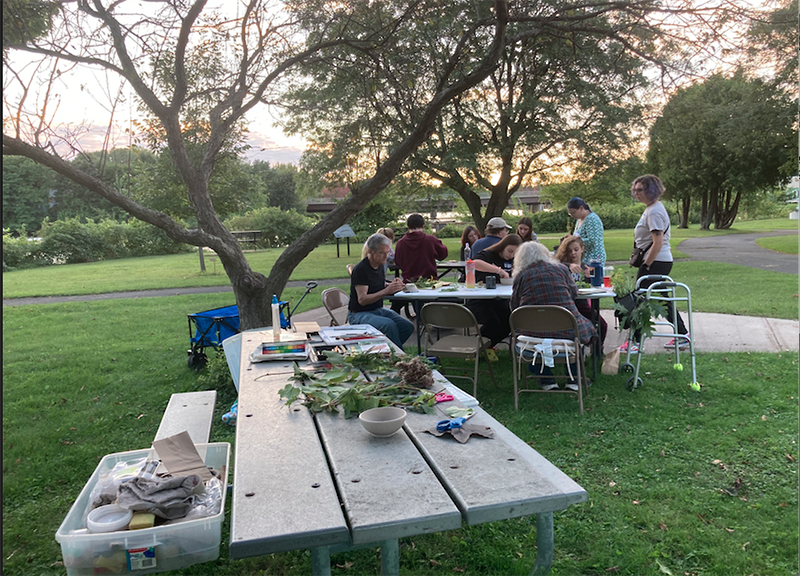Integrative Ecology And Craft Recap
With historic flooding, stifling heat, and everything in between, outdoor programming has been difficult to carry off this summer. For August’s installment of Exploring Fall Island, we moved from the initial date of choice to the following week on account of chilly rain. The rain date didn’t have a rain date so leading up to it I watched the weather obsessively. While it looked like it would potentially rain in the morning, we decided to go forward with holding the event outdoors.
Thankfully, the evening was perfect! Biologist Dr. Tom Langen and I walked with a group of 11 people of all ages around Fall Island and shared knowledge about the plants and trees we encountered.
Tom mentioned making cedar tea for his students, which has inspired me to attempt to make a cedar syrup for homemade sodas.
The cedars we paused to look at were partially covered in Virginia creeper (Parthenocissus quinquefolia), riverbank grapes (Vitis riparia), and summer grapes (Vitis aestivalis). Tom explained that these plants are temperate lianas, meaning they are woody vines that grow from soil and use trees for support to climb up in search of sunlight. While all three of these lianas are native plants, and the wild grapes can be eaten in various ways, over time they smother and kill the trees they climb. The lianas will then grow onto surrounding younger trees, and the age of a forest can be estimated by seeing how large the bases of the lianas are.
Participant Holly Chambers asked the interesting question: “If you could remove one invasive species from this park what would it be and what would you replace it with?” I was surprised by Tom’s answer of the Norway Maple. There are several in the park, and while I appreciate their unusual dark leaves, they are apparently one of the most invasive species in New York. They don’t appear to be a huge issue in Northern NY where we are but as climate change intensifies, they may become more of a problem. At a minimum, we should not be planting anymore, and we are free to make delicious fritters from their flowers in the spring.
After learning about plants, we all chose pots I had previously made and decorated them with alphabet pasta for our names and leaves and flowers for the patterns. I’m currently working on trimming the bottoms of these and am excited to see how they come out.
This project was made possible by a Support For Artists grant from the New York State Council on the Arts (NYSCA). If you would like Sara to offer similar programming at your organization, email her at saraelynch@gmail.com to discuss your ideas.




